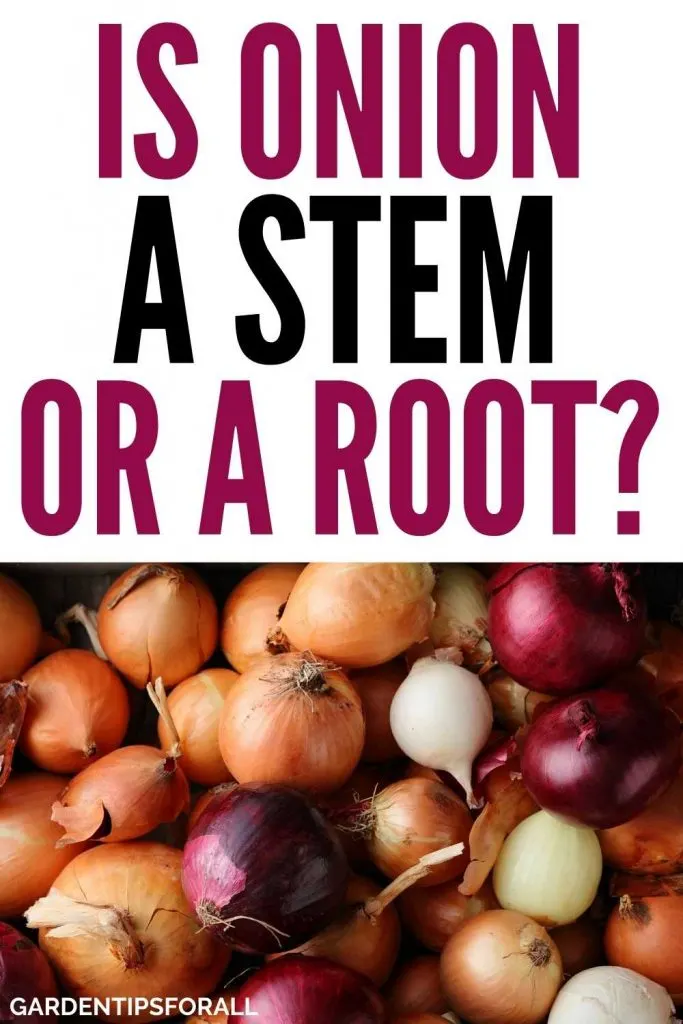Is Onion a Stem or a Root?
Onions are often mistaken for roots because they grow under the ground. Others assume they’re stems because most of the upper part of the plant is leafy. So, is onion a stem or a root?
Technically, onion is not a root, and it’s not a stem either. It’s a tunicated bulb, a type of a modified stem, where the fleshy leaves store food and transfer this food to other parts of the plant when necessary.
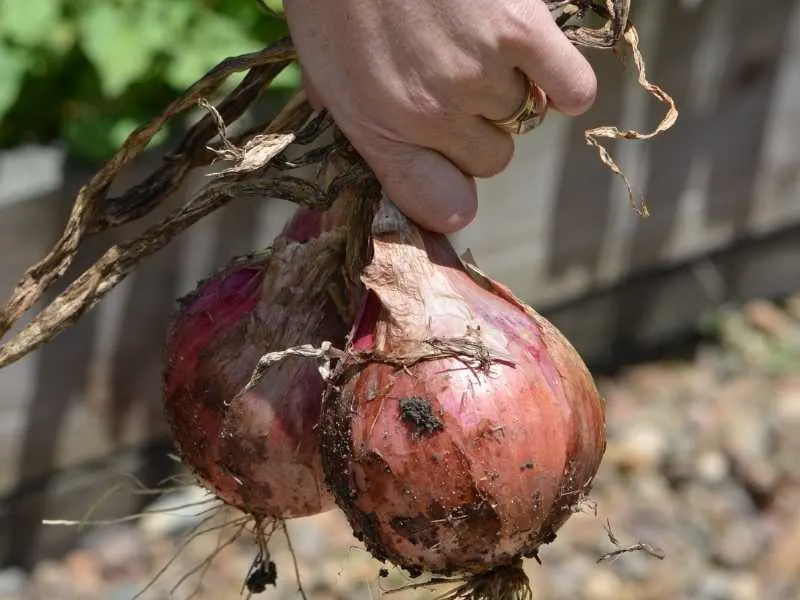
Please keep reading to find out more about which part of the plant the onion is.
To understand what an onion is, we need first to discuss what type of plant it is, how it grows, and each part of the plant.
Related: Best Gardening Books for Beginners
About the Onion
The onion belongs to the genus Allium, and it’s one of the most cultivated plants in this genus.
The cultivation of onions dates back about 7000 years ago. But when and where it came from is yet to be established.
Also known as common onions, or bulb onions, onions are characterized by hollow leaves and a flat base where both roots and the fleshy leaves develop.
Unlike the ginger, an onion’s stem lacks nodes or internodes.
When preparing onions, the flat base is that hard part that you cut out at the bottom of the onion and throw away.
This base can be considered the stem. Leaves develop on this stem one by one, with one leaf developing over the other to form a concentric circle around a bud in the middle.
This collection of leaves is easily visible when you cut the onion either horizontally or vertically.
It is also refered to as a false stem since the only section that qualifies to be called a stem is the basal point.
Bulbing

This is the process in which the onion bulbs we harvest develop. It occurs when leaves that originated from the basal point start to swell as they accumulate food.
According to Dr. Brunel, one of the factors that affect how large the bulbs grow includes day-length, also known as the photo-period. This means, the longer the day with the appropriate temperatures, the larger the bulbs will grow.
In relation to that, there are different types of onion varieties depending on the amount of daylight they need.
These include:
- Long day onions – This type needs 14 to 16 hours of daylight.
- Intermediate day – This type needs 12 to 14 hours of daylight
- Short day – This variety only need 10 to 12 hours of daylight
However, since the bulb leaves only store food, onions still need photosynthetic leaves to produce leaves like any other plant. That’s why they have the foliage and flowers that grow upwards above the ground.
Maturity
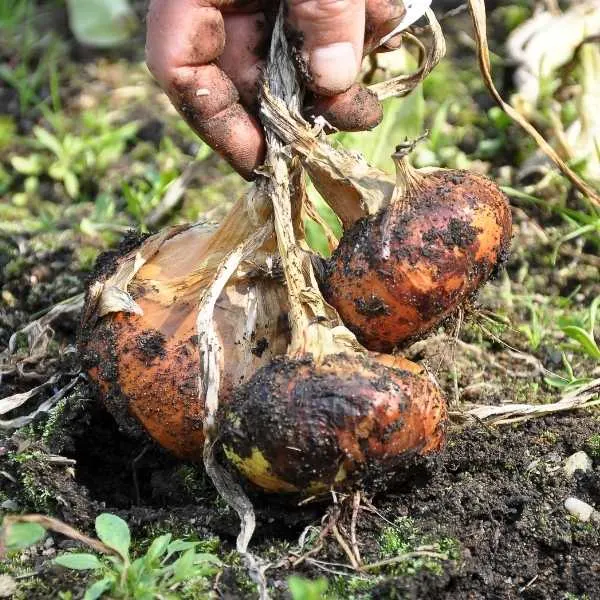
Onions are generally perennials, but they are often grown as annuals. And the bulbs are usually harvested before they mature. If you allow the bulbs to mature, they’ll start feeding the flowers again, and you can’t harvest them.
That’s why if you keep onions for too long, they may develop some green sprouts.
Most parts of the onion plant can be consumed, including the bulbs, sprouts, and in some species, the roots are also used for culinary purposes.
Onions are also used as natural pest control. So if you are looking for a natural way to deter pests, then you may want to try using onions.
Why is an Onion Called a Stem?
The onion may be called a stem because it falls under the modified stems and leaves category. According to Libretexts, modifications occur when plants are trying to adapt to a particular environment. They can be underground, aerial, or above ground.
As you can see, onions don’t grow like any other plants. The leaves develop underground to form a tunicated bulb, while the actual stem is a flat base.
There are different types of underground stem modifications that can help explain this better. Below are some of them.
Different Types of Modified Stems
Bulb
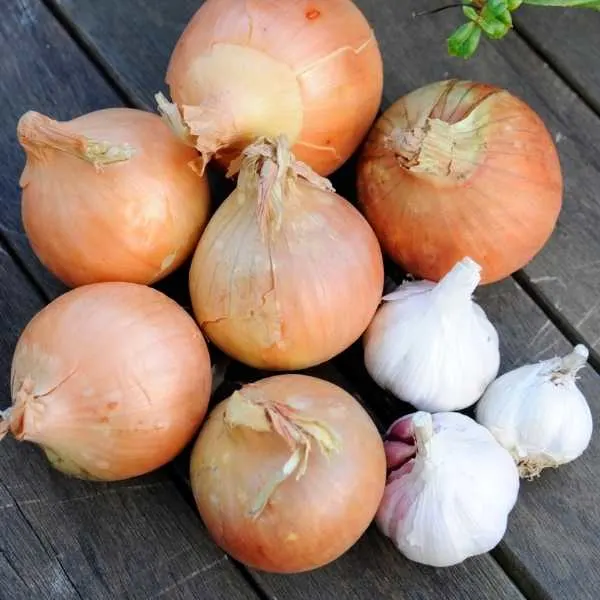
This is the type I’ve been explaining all along. As mentioned earlier, it’s characterized by leaves developing from the base of the bulb towards a terminal at the top to form a concentric circle.
Roots also grow from the bulb’s base into the ground. There are two types of bulbs, tunicated or scaly. Besides bulb onions, garlic also features tunicated bulbs.
But garlic features several smaller cloves in one knob, also known as a head. Each clove is tunicated individually. Lilies, on the other hand, are good examples of scaly bulbs.
Rhizomes

Rhizomes grow horizontally under the ground, and they are known for having nodes and internodes. Some may have terminal buds, while others have auxiliary buds.
And the roots occur at the bottom of these types of modifications. There are two types of rhizomes. There are the straggling rhizomes that grow horizontally, such as ginger or turmeric. And there are rootstock rhizomes that grow at an angle, such as in bananas.
Tubers
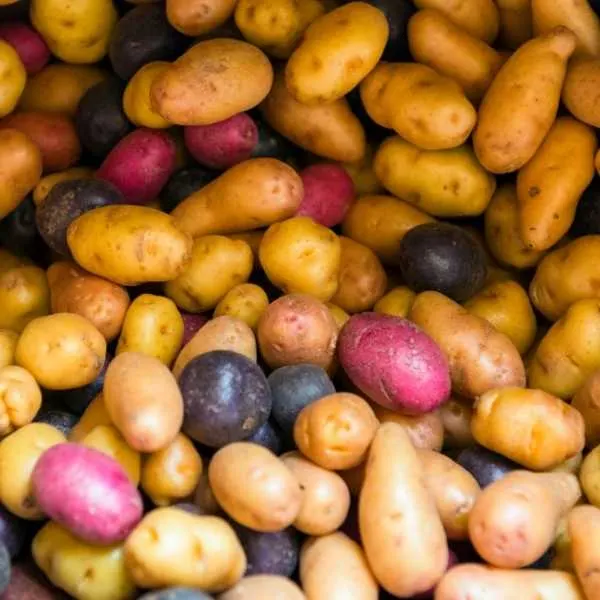
This type develops from a swollen part of an underground stem, also known as a stolon. In most cases, this swollen part stores starch. The “eyes” or depressions you see around the potato are actually nodes.
Tubers also have leaf scars where they connect to the stolon, but they lack adventitious roots. Examples include potatoes, arrowroots, taro, and yams.
Corm
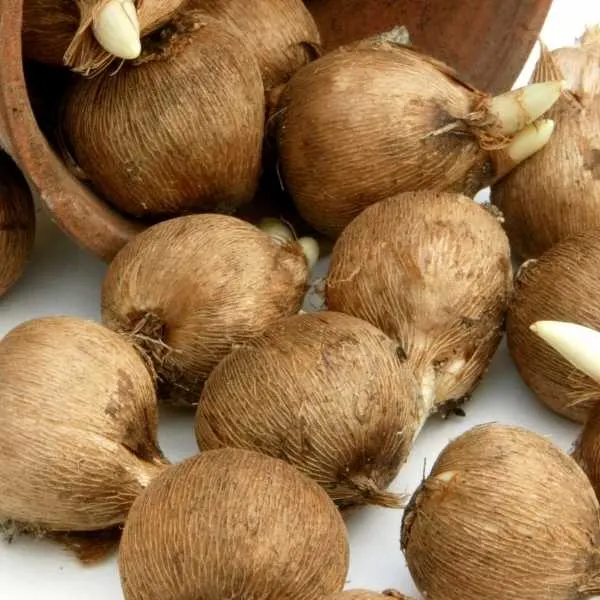
This type consists of swollen stem base covered with scale leaves. But, they lack the concentric rings you’ll find in bulbs and consist of a solid tunic around a vertical storage stem.
Examples of corm include crocus and gladiolus.
Conclusion
So, is onion a root or a stem? It’s neither. However, they can be called stems since the bulb formation is a type of modified stem. The best definition would be a modified stem known as a tunicated bulb. Other examples of modified stems include tubers, such as in potatoes, or rhizomes, such as in ginger. Onions also can’t be considered fruits either since fruits have to develop from flowers, and as we’ve established, onion bulbs develop from the stem and the roots.
